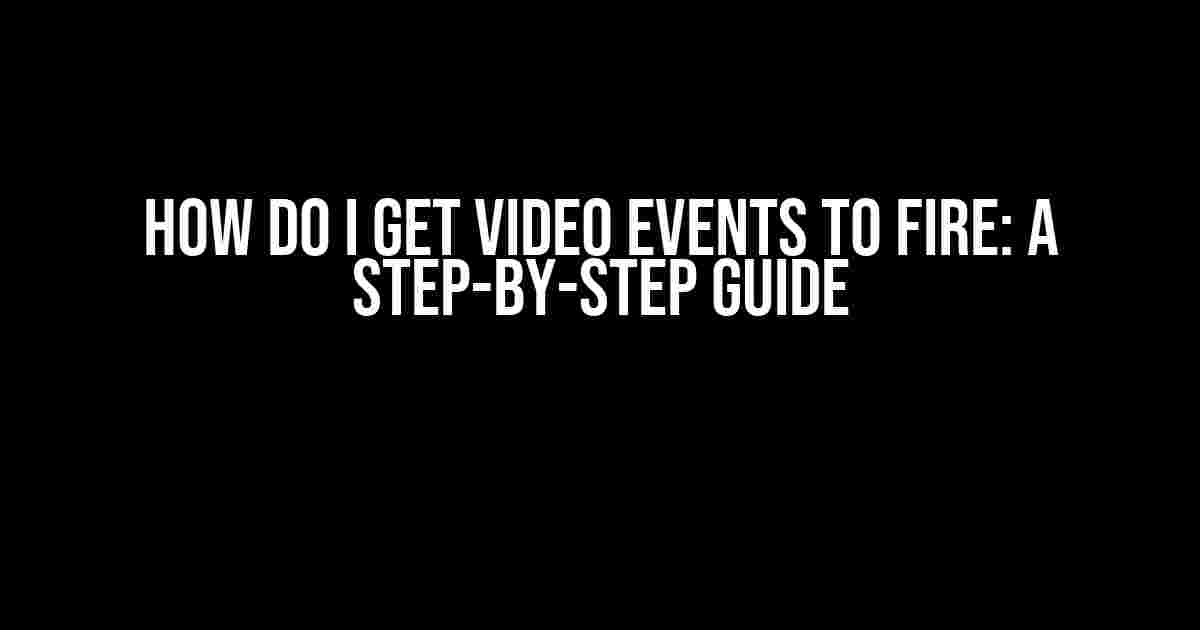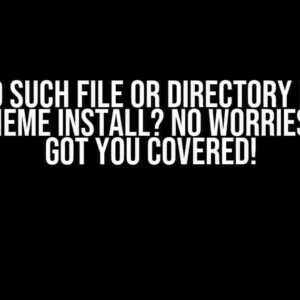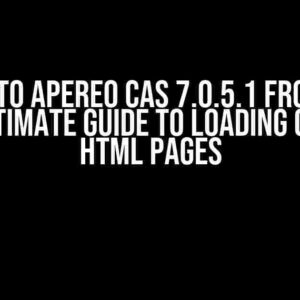Are you tired of struggling to get video events to fire on your website or application? Do you find yourself scratching your head, wondering why your video analytics aren’t tracking properly? Worry no more! In this comprehensive guide, we’ll take you by the hand and walk you through the process of getting video events to fire like a pro.
What are Video Events and Why Do They Matter?
Video events are actions that occur within a video player, such as playback, pause, rewind, and complete. These events are crucial for video analytics, as they provide valuable insights into user behavior, engagement, and interaction with your video content. By capturing these events, you can optimize your video experience, improve user retention, and increase conversions.
Types of Video Events
- Playback Start: The video begins playing.
- Playback Pause: The video is paused.
- Playback Resume: The video resumes playing after being paused.
- Playback Complete: The video finishes playing.
- Playback Seek: The user jumps to a specific point in the video.
- Playback Volume Change: The user adjusts the video volume.
- Playback Fullscreen: The video enters fullscreen mode.
- Playback Error: An error occurs during video playback.
Setting Up Video Events
To get video events to fire, you’ll need to integrate a video player with event tracking capabilities into your website or application. Here are the general steps to follow:
- Choose a Video Player: Select a video player that supports event tracking, such as YouTube, Vimeo, or a custom-built player.
- Integrate the Video Player: Embed the video player into your website or application using its API or embed code.
- Configure Event Tracking: Set up event tracking within the video player’s settings or configuration file.
- Define Event Listeners: Create event listeners that capture and send event data to your analytics platform or server.
Example Code Snippets
// YouTube Video Player Example
<iframe id="yt-player" src="https://www.youtube.com/embed/VIDEO_ID?enablejsapi=1" frameborder="0" allowfullscreen></iframe>
// Create an event listener for playback start
ytPlayer.addEventListener('onStateChange', function(event) {
if (event.data === 1) { // 1 represents playback start
console.log('Playback started!');
// Send event data to analytics platform or server
}
});
// Vimeo Video Player Example
<script src="https://player.vimeo.com/api/player.js"></script>
// Create an event listener for playback complete
player.addEventListener('ended', function() {
console.log('Playback complete!');
// Send event data to analytics platform or server
});
Common Issues and Troubleshooting
Sometimes, video events may not fire as expected due to various reasons. Here are some common issues and troubleshooting tips:
| Issue | Description | Troubleshooting Tips |
|---|---|---|
| Event Listeners Not Firing | Event listeners are not capturing video events. |
|
| Event Data Not Being Sent | Event data is not being sent to the analytics platform or server. |
|
| Video Player Compatibility Issues | The video player is not compatible with the website or application. |
|
Best Practices for Video Event Tracking
To ensure accurate and reliable video event tracking, follow these best practices:
- Use a Single Video Player Instance: Use a single video player instance per page to avoid event tracking conflicts.
- Define Clear Event Names and Values: Use descriptive event names and values to ensure accurate tracking and analysis.
- Handle Event Errors and Exceptions: Implement error handling and exception handling mechanisms to handle unexpected events or errors.
- Test and Validate Event Tracking: Thoroughly test and validate event tracking to ensure accuracy and reliability.
- Monitor and Analyze Event Data: Regularly monitor and analyze event data to identify trends, patterns, and areas for improvement.
Conclusion
Getting video events to fire requires careful planning, implementation, and testing. By following the steps outlined in this guide, you’ll be able to track video events with ease and gain valuable insights into user behavior and engagement. Remember to troubleshoot common issues, follow best practices, and continually monitor and analyze event data to optimize your video experience.
Now, go forth and conquer the world of video events!
Frequently Asked Question
Having trouble getting those video events to fire? Don’t worry, we’ve got you covered! Check out these frequently asked questions to get your video events up and running in no time!
Why aren’t my video events firing when I upload a new video?
Ensure that you have enabled video events in your account settings and have correctly configured your video event triggers. Also, make sure that your video upload meets the required specifications and that your video processing is complete. If you’re still having issues, reach out to our support team for assistance!
Can I customize the video events to fit my specific use case?
Absolutely! Our platform allows you to customize video events to fit your unique needs. You can create custom event triggers, set up conditional logic, and even integrate with third-party tools using our API. The possibilities are endless!
How do I troubleshoot issues with my video events not firing?
Start by checking your account settings and video event configurations to ensure everything is set up correctly. Then, review your video upload logs to identify any potential issues. If you’re still stuck, our support team is here to help you debug and resolve any problems!
Are video events only triggered when a video is uploaded, or can they be triggered at other points?
Our platform offers a range of video event triggers beyond just video upload. You can set up events to fire when a video is processed, transcoded, or even when a viewer interacts with your video content. The flexibility is yours!
Can I use video events to integrate with third-party services or tools?
Yes, you can! Our API allows you to integrate video events with a variety of third-party services, such as marketing automation platforms, CRM systems, or even custom applications. The possibilities for automation and workflow optimization are endless!



